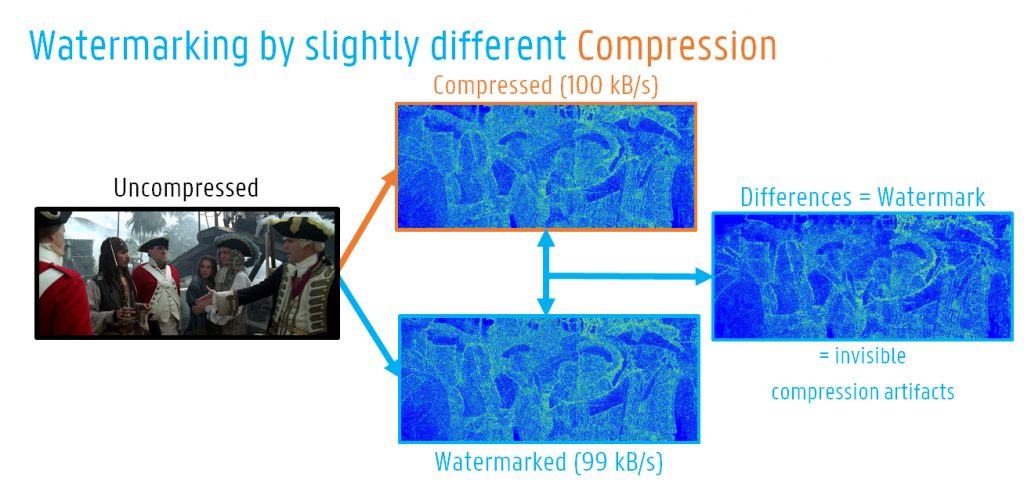We are glad to announce that our paper “Implementation-Free Forensic Watermarking for Adaptive Streaming using AB Watermarking” was accepted for presentation at the International Congress on Information and Communication Technology, in London, United Kingdom (held digitally due to the ongoing pandemic). The proceedings will be available soon here.
Hannes Mareen presented his research on February 25, 2021. The presentation (12 minutes) was recorded and can be watched below (starting at timestamp 2:40), or by clicking here.
Existing forensic watermarking methods objectively degrade the video quality or negatively affect the video bit rate. My previous work proposed a watermarking method that preserves the video encoder’s rate-distortion performance, but that required complex modifications to existing video encoders.
As a solution, this paper proposes an implementation-free watermarking method that does not require changes to existing video encoders. Instead, only the input of existing video encoders is changed to embed a watermark. More specifically, the target bit rate is slightly changed to embed a watermark. For example, watermarked video #1 is created by compressing the video at 100 kB/s, and watermarked video #2 by compressing the video at 99 kB/s. These compressed videos contain different (invisible) compression artifacts, which are used a watermark representation. In this way, the watermark is embedded automatically be doing a slightly different compression. The compression of both watermarked videos is equally efficient and the video encoder’s rate-distortion performance is preserved.
 The watermark is embedded by slightly changing the target bit rate, which results in different (invisible) compression artifacts that represent the watermark.
The watermark is embedded by slightly changing the target bit rate, which results in different (invisible) compression artifacts that represent the watermark.
Unfortunately, many existing codecs (such as x264 and x265) only allow a target bit rate change of minimum 1 kB/s. This means that is hard to create many watermarked versions of a video without significantly changing the target bit rate. Additionally, the proposed approach requires a separate compression step per watermarked video. This is not scalable.
To solve the scalability issues, the proposed method is to be used with the scalable A/B watermarking concept. In A/B watermarking, only two watermarked versions (i.e., version A and version B) are created of every short video segment. Then, by switching between video segments of A with video segments of B in a unique pattern, we can create many watermarked videos.
This approach goes well together with adaptive streaming architectures. In adaptive streaming, multiple versions are prepared for each short video segments (e.g., at different resolutions or bit rates). By creating an A and B version of video segments at every resolution/bit rate, these concepts are succesfully combined.
In conclusion, the proposed method allows video distributors to apply forensic watermarking without changing the implementation of their video encoders, and without affecting their efficiency. By combining A/B watermarking in adaptive streaming, the overhead of this security measure is relatively low.







